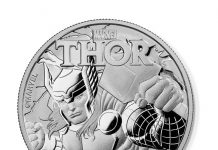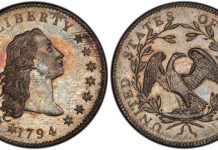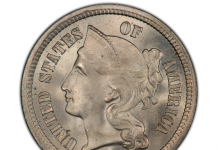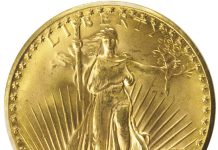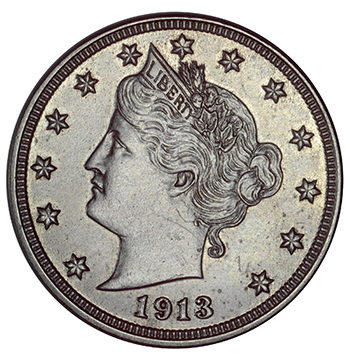

Every year at this time, I think about a 2003 publicity stunt that was only supposed to promote awareness of a coin show but surprisingly solved a 41-year-old numismatic mystery: the whereabouts of the long-lost Walton specimen 1913 Liberty Head nickel.
Ever since the five known 1913 Liberty Head nickels made their first appearance at the 1920 American Numismatic Association convention in Chicago, the hobby has generally kept track of them as they went into the hands of various owners.
George O. Walton, a Virginia antiques and rare coin dealer, acquired one of the coins for $3,750 in 1945. That coin and many others in his possession were recovered after being scattered along Highway 264 when Walton was killed in a car crash in North Carolina in 1962. But his 1913 Liberty Head nickel was later erroneously declared a fake–a mistake not corrected until four decades later. So in the meantime, collectors wondered: “If Walton’s coin is not real, where is that fifth 1913 Liberty Head nickel?” It vanished from the hobby’s radar, despite efforts over the years to locate it.
The 2003 public relations stunt I created for the ANA convention that year in Baltimore was simple. If anyone had the missing coin, Bowers and Merena (now Stack’s Bowers Galleries) would pay either a $1 million cash advance to auction it or purchase it for a minimum of $1 million. The purchase price could be higher, depending on the condition of the coin after all those years missing.
Bowers and Merena was then owned by Collectors Universe, Inc. president and PCGS co-founder David Hall, who added to the reward pot by announcing he would pay $10,000 just to be the first to authenticate the fifth coin.
Associated Press reporter David Tyrrell-Wysocki broke the reward story on Memorial Day weekend of 2003, and it quickly spread across the country. There were hundreds of unproductive and sometimes absolutely false leads. Someone claimed it was lost on the Titanic–which sank in April 1912, probably months before the five nickels were mysteriously made at the Philadelphia Mint.
After the AP story was released, two other journalists, Coin World’s editor, Beth Deisher, and a young Virginia newsroom clerk at The Roanoke Times, Mason Adams, tracked down Walton’s heirs and the missing coin through good ol’ fashioned investigative reporting.
Walton’s nephew, Ryan Givens, and niece, Cheryl Myers, and her husband Gary, brought their uncle’s coin to the 2003 Baltimore ANA World’s Fair of Money. Where had it been for 41 years? Believed a fake, it was unsuspectingly kept in a closet and later in a bedroom nightstand at their late mother’s home in Virginia. She was Walton’s sister, and coincidentally, born in 1913.
An initial examination in the convention center’s tiny show manager’s office, a glorified closet, was made by experts Paul Montgomery, Mark Borckardt, and John Dannreuther. They were virtually certain the coin was genuine. Another secret examination was made at midnight in the security room. Hall, Montgomery, Borckardt, Dannreuther, Jeff Garrett, and Fred Weinberg carefully compared Walton’s coin against the four known surviving nickels that would go on public display at the show just hours later. After 20 minutes, Montgomery told Walton’s heirs: “It is genuine. Congratulations. God bless you!”
In 2013, the heirs sold the famous coin through Heritage Auctions for $3,172,500 and made a generous donation to the ANA.
Former award-winning Chicago journalist and broadcaster, Donn Pearlman has written tens of hundreds of newspaper and magazine articles promoting the coin hobby and profession. He currently serves as Acting Executive Director of the Numismatic Literary Guild.
Want to receive COINage magazine in your mailbox or inbox? Subscribe today!

